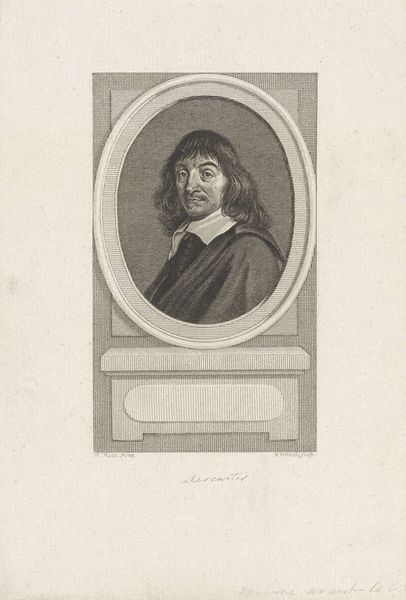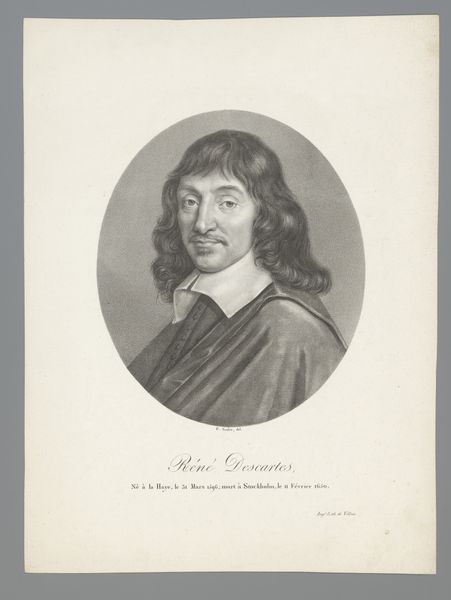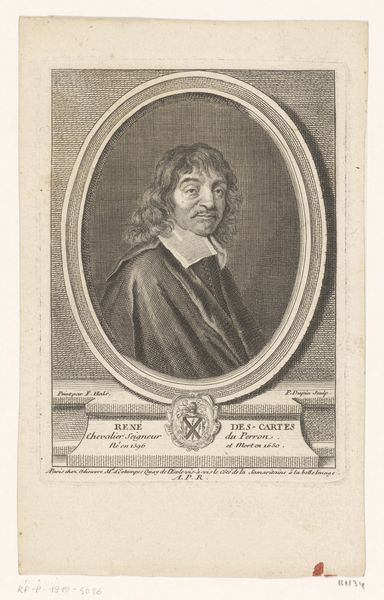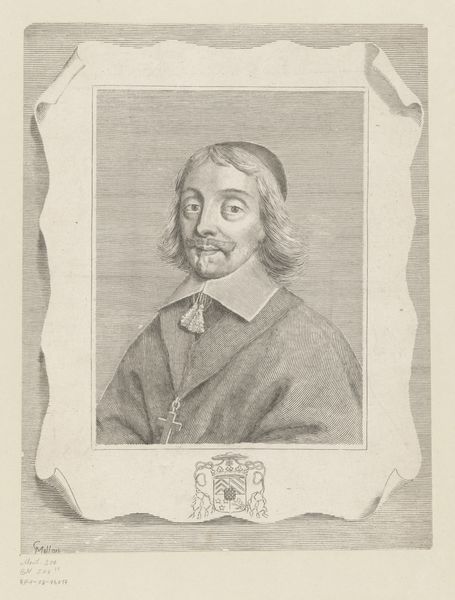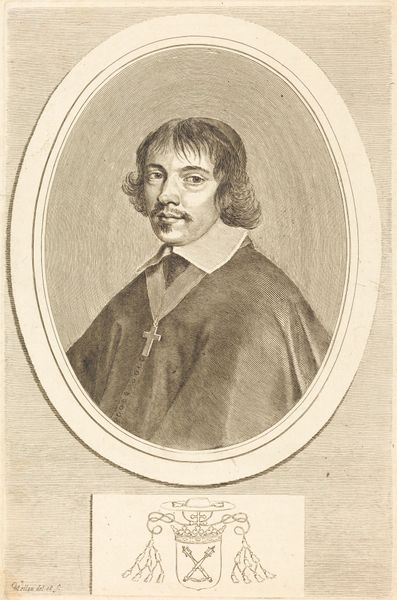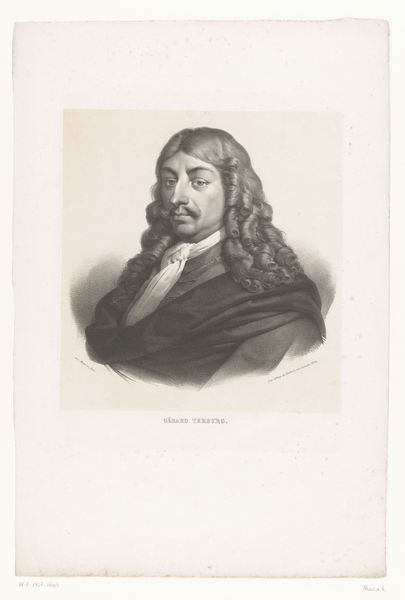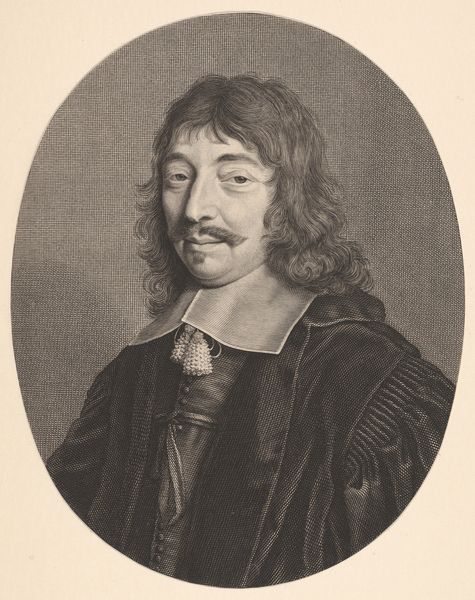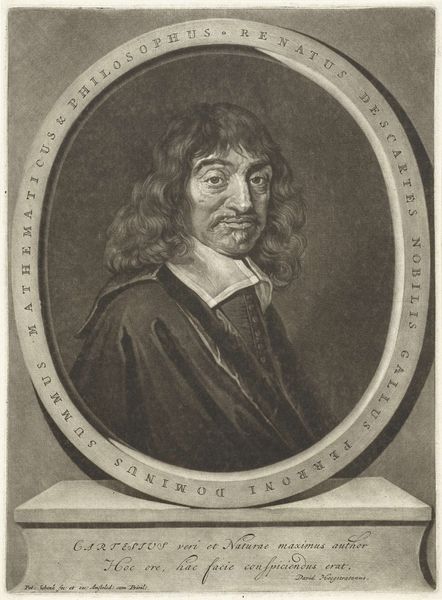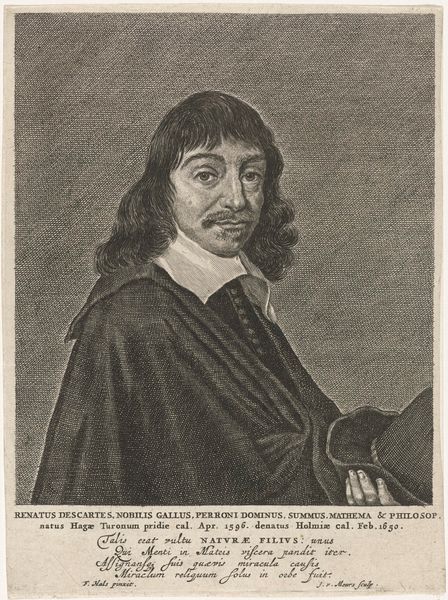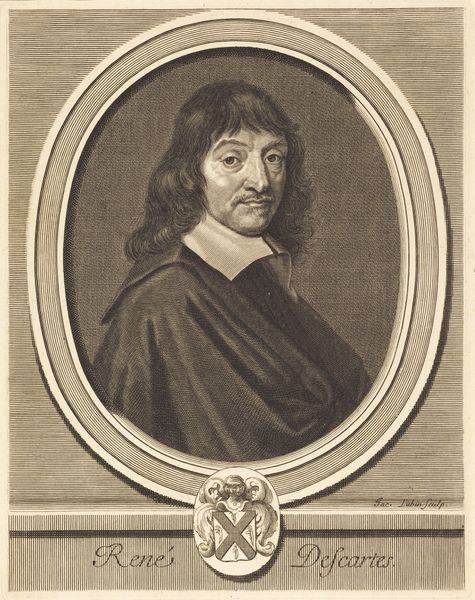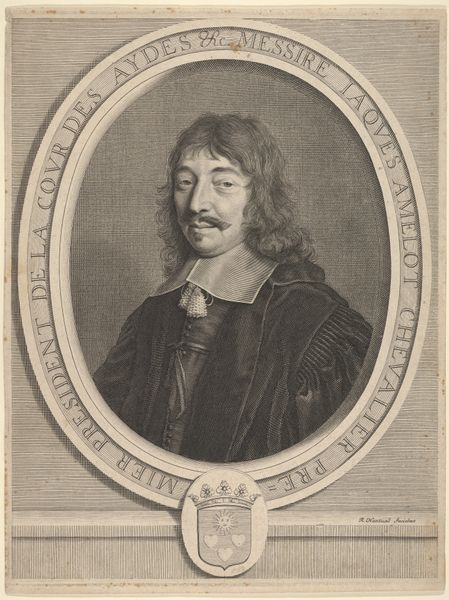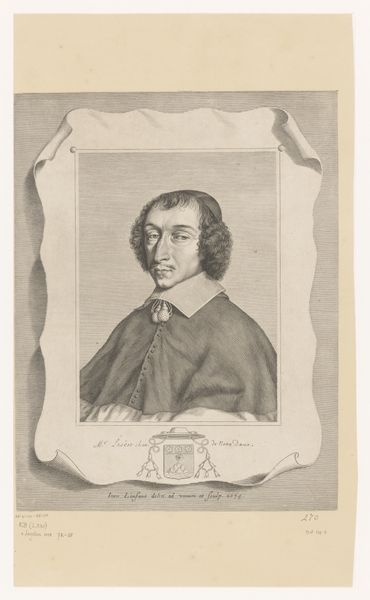
drawing, pencil
#
portrait
#
pencil drawn
#
drawing
#
neoclacissism
#
light pencil work
#
pencil sketch
#
pencil drawing
#
pencil
#
portrait drawing
#
pencil work
#
academic-art
#
realism
Dimensions: height 466 mm, width 325 mm
Copyright: Rijks Museum: Open Domain
Curator: Welcome. We're looking at a portrait drawing of René Descartes, the famed philosopher and mathematician. The artist is Charles Paulin François Matet. We believe it was created before 1827, placing it squarely in the Neoclassical period. Editor: The stark contrast between light and shadow makes him look almost severe. The drawing is dominated by these serious eyes and a tightly controlled mouth. He’s giving very little away, it makes me want to consider what aspects of self he presents to the public, and what’s kept hidden. Curator: It’s fascinating how portraiture gained popularity, particularly as societies became more fascinated with individualism, so this portrait serves as an important cultural object and philosophical one too. Editor: I'm curious about how Descartes might feel about being represented this way. Given his philosophical inquiries into the nature of reality and selfhood, would he approve of the somewhat idealized depiction? Would he consider it an accurate representation, or just another layer of artifice masking the "true" self? The cloak lends him a rather Roman gravitas, while the slight asymmetry around his eyes and face add an organic, realistic quality to an otherwise heavily stylized portrait. It strikes me that the portrait hints towards tension in the era’s self-construction: reality vs representation. Curator: The distribution and commissioning of portraits became linked to larger political and social structures and, here, it signals his social status. Editor: Absolutely, and the image circulates to uphold these power structures in academic settings where ideas can be debated by intellectual peers. If Matet captures an aspect of the man through a commitment to Realism and Academic-Art, does that risk glorifying him too? Does an artwork's realism require interrogation of who it is representing and the circumstances for which that person has fame and prestige? Curator: Interesting. Certainly, this portrait participates in a kind of visual construction of intellectual authority which circulated in prints and academic circles. The level of detail achieved using only pencil, highlights technical skill and reflects standards expected during the Neoclassical movement, particularly an admiration for the linear forms that also echo classical sculptures. Editor: Yes, there's definitely an element of canonization at play. Seeing it this way encourages me to ponder more about the context and purpose, particularly how philosophical and academic status might skew impressions or interpretations of artwork. Curator: I agree. It challenges us to confront how images can perpetuate both personal legacies, and broader power dynamics of academic knowledge and the art market. Editor: Well, I can say looking closely certainly makes you think! Curator: Indeed, it highlights the powerful roles of artistic representation, status and dissemination of ideas during historical shifts.
Comments
No comments
Be the first to comment and join the conversation on the ultimate creative platform.
